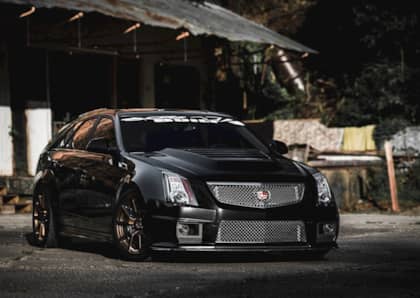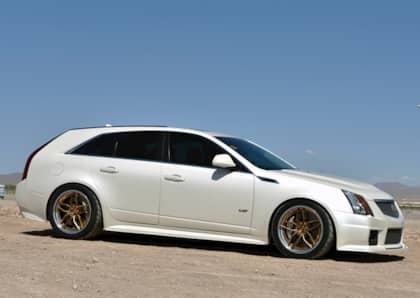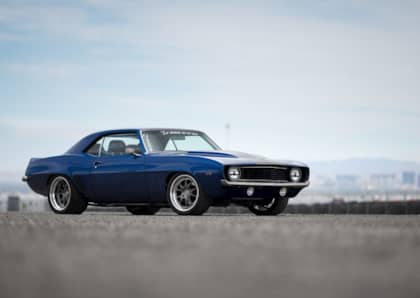Performance Roadblocks Of The LSA V8: 5 Tips For Moving Past Stock Horsepower
When GM started offering factory-supercharged LS engines towards the end of the 2000s it was a massive boon for anyone seeking the ultimate in affordable forced induction performance. The most appealing of the blown blocks was the LSA, a 6.2-liter V8 that was conservatively tuned from the factory to offer between 556hp (in the 2009-2014 Cadillac CTS-V) and 580hp (the 2012-2015 Chevrolet Camaro ZL1).

Available as both a crate motor and of course in hundreds of wrecking yards across the country thanks to the efforts of overzealous drivers, the LSA is an intriguing choice for anyone who wants to take advantage of the additional overhead built into the 6.2-liter motor from the factory when creating their own boosted beast.

Let's take a look at the key performance roadblocks associated with the LSA V8, and how to crank out way more horsepower than this engine offered in stock trim.
Performance Roadblock #1: Pulley Swap + Snout Porting
The fantastic thing about any factory forced induction motor is that it's almost always capable of running more boost than what was offered in stock tune. This is of course the case with the LSA, which provides serious upgrades to the LS3 block on which it is based that make it much stronger, with better oiling and cooling, than any naturally-aspirated LS motor.

It's no surprise then that the first performance roadblock to blow by is the stock level of boost produced by the LSA's 1.9-liter Eaton blower. This can be accomplished by a relatively simple pulley swap. By moving to a 2.550 inch upper pulley you can bump the engine from 9 psi to 13 psi, which translates into 50 horsepower at the wheels. If you intend to run the engine in a racing application and have access to fuel with a higher octane rating than what's available at the pump, you can also swap the lower pulley from 7.800 inches to 8.660 inches for a gain to 16 psi and another 20 horsepower.

A pulley swap is the tip of the iceberg for the LSA's supercharger, but keep in mind you'll need to upgrade the intercooler and heat exchanger to keep everything running at the right temperature even though the blower is spinning quicker. You may also want to consider porting the supercharger snout as well as the throttle body, or even replacing the latter, which is 87 mm in size, with a 102 mm unit.
Performance Roadblock #2: Cylinder Heads
Speaking of porting: the LSA's cylinder heads are essentially recast LS3 units, which means they flow around 300 cfm intake and 210 cfm on the exhaust side at .600 inches of lift. Porting can add as much as 70 cfm to the intake figure thanks to the elimination of the factory flow vane, which is an emissions-related feature not required for a performance build.

Aftermarket heads are also out there, and some can make similar levels of intake flow improvement while also significantly improving exhaust flow, which is particularly important for a supercharged engine. Keep in mind to match peak flow with the camshaft profile you choose for your build.
Performance Roadblock #3: Fuel System
Fueling can be a complicated issue for a forced induction motor. The stock fuel injectors are good for up to 600 wheel horsepower, and once you start flirting with the 700 horsepower mark you'll need to upgrade the pair of fuel pumps, too.

In addition to being able to meet the demands for gasoline made by a motor running past its stock specifications, you may also want to consider an aftermarket EFI system that can adjust the timing and air/fuel ratio of each individual cylinder. Why is this important? Fuel can serve as an additional cooling element, especially at the rear of an engine, and individual cylinder timing can allow more aggressive advance for areas of the engine not forced to deal with excessive heat. It's an in-depth strategy that can add meaningful levels of horsepower in the hands of an experienced tuner.
Performance Roadblock #4: Forged Pistons
Although the crankshaft is forged steel, the pistons in the LSA are made of cast aluminum. As an insurance policy against detonation, it's worth installing a set of forged pistons should you go all-in on an upper and lower pulley swap, or install the larger 2.3-liter supercharged found on the similar LS9 engine.

If you're considering an additional power adder, such as nitrous oxide, forged pistons are a must.
Performance Roadblock #5: Camshaft
All LS engines respond well to camshaft upgrades, and the LSA is no exception. Given the variability of boost levels and other upgrades, it's difficult to provide precise numbers in terms of how much horsepower is available by going with an aftermarket camshaft, but it's safe to say that moving to a 227 degree intake duration can net you up to 50 horsepower, conservatively, with another 12 degrees bringing 25 more horses to the equation.

Interestingly, camshafts designed for a centrifugal blower tend to work well with the positive-displacement fitted to the LSA.
More From Driving Line
- Want to learn more about the history and potential of the LS engine platform? We've got you covered with this deep dive into the LS V8.











